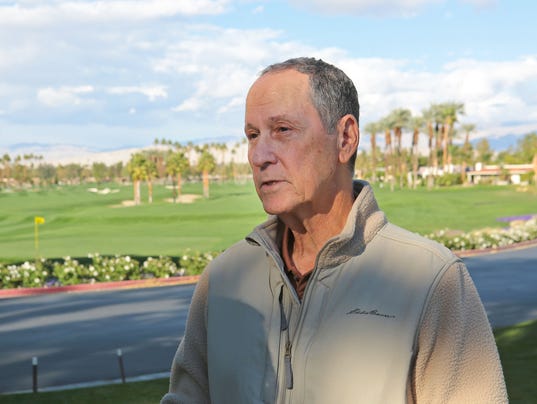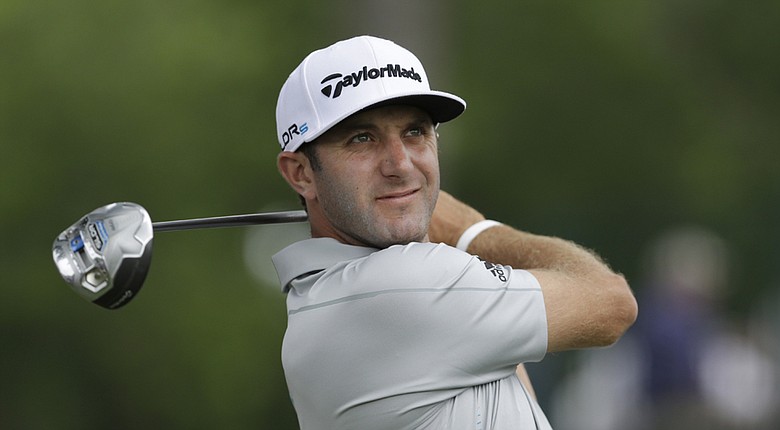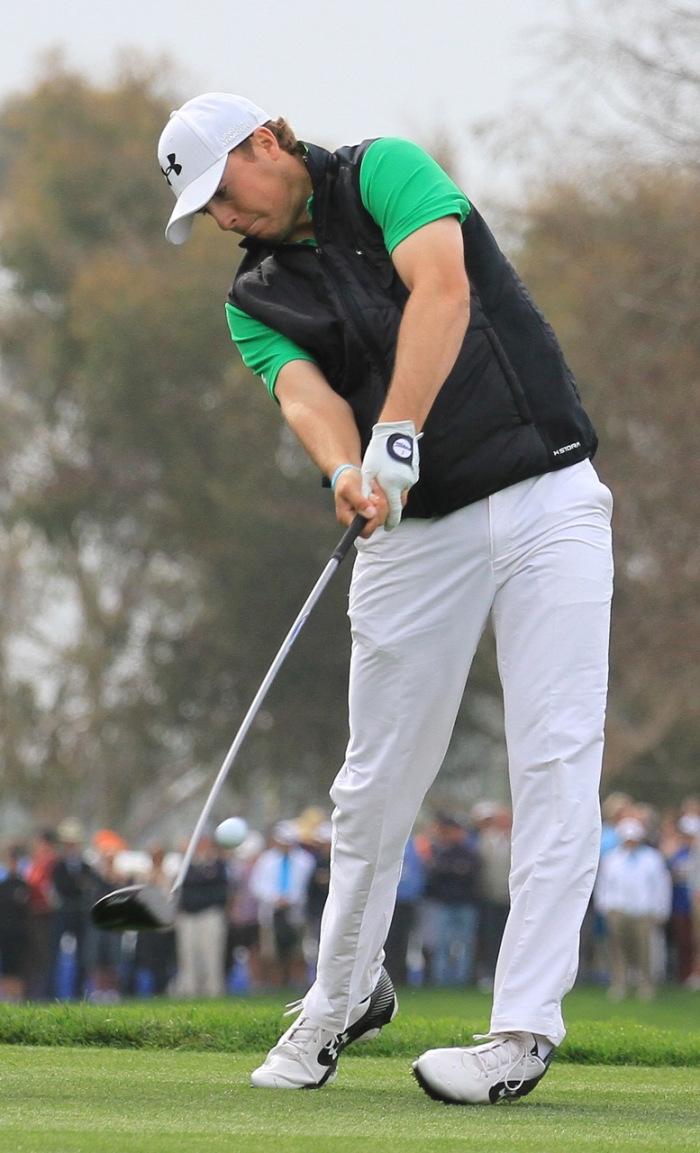When you come to think of it that is the secret of most of the great holes all over the world. They all have some kind of a twist. C.B. MACDONALD
"A dad playing golf with his daughter – that’s what it’s all about.”
/Poll And Question: "Is the time right for non-conforming clubs?"
/That's the question Mike Stachura refreshingly attacks for GolfDigest.com in the wake of 2016's PGA Show.
 After exploring the efforts in the Asian market to introduce such clubs, Stachura writes:
After exploring the efforts in the Asian market to introduce such clubs, Stachura writes:
But no major U.S. company is looking at the nonconforming market and getting intrigued. Several major manufacturers contacted by Golf Digest said they would not be pursuing nonconforming equipment; others had no specific comment on the issue. Typical was this response from Callaway: “We think there is a lot of runway to give distance and performance while still playing by the rules.”
Even proudly renegade upstart Parsons Xtreme Golf defended golf’s rules. Said PXG and GoDaddy.com founder Bob Parson, “PXG believes that the USGA upholds the integrity of the game. As such, PXG’s clubs comply with all USGA regulations and we have no intention of introducing nonconforming equipment.”
The pressures of Wall Street and the weakening Rules of Golf will conspire at some point to bifurcate the game. Throw in the difficulty of finding suitable venues for the pro game played with ever-improving equipment and the hand of a major governing body will be forced to act in the form of a tournament ball. If it's not that, then the pressure will come from Wall Street for annual innovation and growth, and at some point that will mean non-conforming clubs.
So with those inevitabilities in mind and after reading Stachura's piece, I'd ask you to vote...
Austin City Council Backs Lions Muny, UT Wants Its Shops
/World Golf Foundation CEO: Millennials Will Be The "Core"
/In today's what golf will do to be loved by the 18-to-34 year olds, World Golf Foundation CEO Steve Mona says they're coming and the game should adjust to their every need.

 Tod Leonard reports for the San Diego Union Tribune on the bullish tone Mona has for the state of the game.
Tod Leonard reports for the San Diego Union Tribune on the bullish tone Mona has for the state of the game.
They key segments to all of golf are youth and the millennials, which the NGF deems as those between 18 and 34 years old. The NGF did a comprehensive study of millennials and found that six million are currently playing and contributing about $5 billion annually to the golf industry. Another 12 million millennials expressed interest in taking up the game at some point.
"This kind of sky-is-falling talk that millennials aren’t playing the game, the facts belie that," Mona said. "It would be disingenuous of me to say, though, that there aren’t issues to address."
The NGF study reported that millennials value the tenets of the game as much as their older peers, but are turned off by perceptions of stodginess or lack of acceptance. Among the areas that need to be addressed, Mona said, are dress codes, use of technology on the course and even the use of music while playing.
"There are courses that already are reshaping their whole experience to be extremely millennial-friendly," Mona said. "There are others who haven’t so much. But if you talk to any operator who is paying attention to the business, most of them will tell you they are making adjustments to appeal to the millennial audience.
"They’re the next group coming along, and they’re going to be the core."
Yes, in about 20 years! In the mean time...
No Green Room Syndrome For Golf's Youth Movement, Yet
/Two listens are worth your time if you love basketball and golf. Both have helped me better realize why golf's recent explosion of young talent is so impressive: Charles Barkley discusses the demise of fundamentally sound players driving down the quality of NBA basketball (with Bill Simmons), and Roy Williams venting about ESPN deeming "Green Room" caliber players and further damaging the already beleaguered college basketball.  As you know from reading here or hearing us talk on Morning Drive, the age minimum for males winning a significant pro golf tournament has seemingly dropped from late 20s to early 20's. A number of players have been able to seal the deal at an age that was almost an unthinkable winning age in pro golf not long ago.
As you know from reading here or hearing us talk on Morning Drive, the age minimum for males winning a significant pro golf tournament has seemingly dropped from late 20s to early 20's. A number of players have been able to seal the deal at an age that was almost an unthinkable winning age in pro golf not long ago.
No one knows the exact cause of this youth onslaught, but some mix of technology, coaching, physical fitness, junior golf, college golf, social media, worldliness and access to equipment has played a role. While this could be a phase and some of the hype is driven by marketers hoping to appeal to ad buyers desiring millennial-friendly enterprises, there does appear to be a paradigm shift. (Though I will always insist golf is at its best when players of varied ages populate a leaderboard.)
Contrast the state of golf with college basketball, where leading voices continue to lament the skill decline of young players.
Charles Barkley discusses this with Bill Simmons on last week's podcast. As with all things Barkley, it's a fantastic listen if you love college hoops or the NBA.
And then there was legendary coach Roy Williams, wheeling out countless golf analogies in his weekly North Carolina press conference before shifting to a rant about ESPN and their use of the "Green Room" label to discuss certain NBA Lottery-caliber players. Williams makes pretty clear that his sport is damaged by its television partner viewing their game merely as a stepping stone to the NBA.
Here is the short version related to the Green Room rant from The Big Lead, though some of you will enjoy (and question) his golf analogies in the full press conference.
Full PC: Watch Roy Williams address the media prior to tomorrow's game vs Boston College. https://t.co/8FVdw3VyG0 @UNC_Basketball
— GoHeelsTV (@GoHeelsTV) January 29, 2016
I highlight this contrast between basketball and golf because,
(A) it should make you feel better about golf's youth movement if you were understandably uneasy about the rush to anoint young people the next great things, and
(B) it's a cautionary tale for golf if there becomes an insistence on pushing young players too far with silly Green Room-like labels instead of allowing the players to evolve naturally or accepting that not everyone matures quickly, and
(C) both listens are about a sport viewed as in great shape, yet here are two of the most respect minds in that sport openly lamenting the quality of play just as we've seen in golf. The difference is, golf's youth rush has been more organic and the star status earned by the players thanks to their playing prowess.
Johnny To USGA: Roll Back The Ball To Bring Back Cool
/Billy Casper's son Byron stopped by the Farmers Insurance Open media center Wednesday and I had the privilege of having watched his dad play the Champions Tour. Byron kindly listened to me ask about how his dad went from a gentle fade in his prime, to the most amazingly well-controlled draw show in his Champions Tour. Naturally, this got me thinking of the great shot shapers who moved the ball and how today's fans would be in awe watching these craftsman of yesteryear pursue their craft.
Naturally, this got me thinking of the great shot shapers who moved the ball and how today's fans would be in awe watching these craftsman of yesteryear pursue their craft.
Translation millennials: they were artisanal, small-batch, locally-sourced ball strikers.
I bring this up because Jim Achenbach says Johnny Miller called out he USGA for not having better regulated the ball. Addressing members of the International Network of Golf at Orlando's PGA Show...
Then he asserted the USGA is "afraid to stand up for what they should be standing up (mandating a golf ball that goes shorter distances for touring pros).
"With that ball (more spin, less distance) you can hit all kinds of cool shots."
USGA Pace Of Play Study Moving Slowly But Surely
/My GolfDigest.com report from the USGA Pace of Play Symposium also appears in Golf World. The takeaway: the USGA hasn't dialed in its numbers and presented a definitive white paper in nearly two years. How dare they?  Nope, it's darned exciting, is what it is!
Nope, it's darned exciting, is what it is!
Instead of another golf organization trying to "grow" the game or help operators maximize profits, the effort to study pace of play is morphing into other sustainability efforts with the hopes of a stronger end effort. So while the focus isn't crystal clear yet, the initial data, research and input from some great minds could ultimately make these efforts the best thing the USGA has ever done. Throw in the joint effort with the University of Minnesota to create a golf course lab and we may actually see some progress in the war on short-sighted course management.
Anyway, my overview, with more to come on this year's testing of the flagstick measuring device unveiled last week.
**My take on the symposium, discussed with Damon Hack on Morning Drive.
Tradition Unlike Any Other: Blaming Tradition
/We've all done it: blamed tradition.

 When the European Tour opened up the dreaded shorts vs. pants debate by granting waivers and allowing their members to wear shorts in pro-am play, I knew "tradition" would be a target.
When the European Tour opened up the dreaded shorts vs. pants debate by granting waivers and allowing their members to wear shorts in pro-am play, I knew "tradition" would be a target.
Sure, the word gets overused and often is hidden behind by those up to no good. But the debate about pro golfers wearing shorts is not a tradition vs. progress topic.
James Corrigan disagrees.
Golf is never in a worse light than when it is cast in the smog caused by tradition being mixed with pomposity.
The tradition should be extolled; the pomposity excommunicated.
Just because golf did it once does not mean it should still be done today. This is a ball sport which has been affected by the advances in technology perhaps more than any other, but in terms of perception it has been depressingly rooted.
For so long the powers-that-be refused to recognise the necessity to go forwards and kidded themselves and their audience with all this "tradition" claptrap.
They summarily dismissed the opinion that children were being put off by the perception of the old man's pursuit and, as regards participation, woefully failed to capitalise on the gift that was Tiger Woods.
Pro golfers wearing pants has nothing to do with tradition and everything to do with aesthetics.
When you're at a pro golf event and you hear spikes, you will turn to find a well-dressed, pressed and fitted person probably clad in one-too-many logos. But you'll also have no doubt you are seeing a professional in his/her arena. A gladiator of sorts, in their arena. One that we have paid to come see perform.
Athletes should stand out and look impressive. They shouldn't dress look like the rest of us. Pants on a golfer, for whatever reason, add a certain gravitas. Golfers wearing shorts have no chance of standing out and, contrary to claims, do not appear to be more athletic by exposing their legs. Instead, they look like they're late for their 1:20 tee time at any old course, not The Old Course.
So while I certainly can respect the view that it's time to push aside the pant aesthetic, I can't agree that demands by administrators to wear them has anything to do with tradition. It is, as the kids say, what it is. We just know class when we see it. This isn't classy or particularly athletic:
Ian Poulter is PUMPED about wearing shorts on the golf course: https://t.co/4un4Bfs06W pic.twitter.com/UtYdqoGqRS
— GOLF.com (@golf_com) January 20, 2016State Of The Game Podcast 63: Iain Carter & The 2015 Majors
/Looking at the major winners over the last decade, there have been some great years though on closer inspection, each has its events that look less-than-satisfying in hindsight. As we discuss with Iain Carter, author of The Majors, the BBC golf correspondent picked a very good year to write a book about the men's Grand Slam events. Because history will look very kindly on the year. Even with Augusta being way too green, Chambers Bay too brown, St. Andrews' greens were too fast and Whisting Straits apparently defenseless (though who knows how anyone breaks par there!), the players picked up the slack for the governing bodies and delivered four very memorable weeks.
As we discuss with Iain Carter, author of The Majors, the BBC golf correspondent picked a very good year to write a book about the men's Grand Slam events. Because history will look very kindly on the year. Even with Augusta being way too green, Chambers Bay too brown, St. Andrews' greens were too fast and Whisting Straits apparently defenseless (though who knows how anyone breaks par there!), the players picked up the slack for the governing bodies and delivered four very memorable weeks.
Carter joins us to discuss the season, his book and the upcoming year. Happy listening via your free podcast app subscriptions (hopefully auto downloading), at iTunes, on the show page or as an MP3 download.
Or below:
Shocker: Palm Springs Area Golf Club's Facing Tensions
/Any number of reasons for the coming Palm Springs/Palm Desert/Rancho Mirage/Indian Wells/La Quinta golf crisis could have been guessed...
--Too many mediocre courses built carelessly over gloriously sandy terrain
--Not enough baby boomers ready to retire to a golf community
--Tired concepts for what a club, clubhouse and golf community should be
--Not enough golfers to buy homes along the courses, meaning non-golfers will have to help pay bills they wont' like maintaining to...
--Defray costs to maintain an unsustainable aesthetic
The list goes on and on, but the greater Palm Springs area and its 100 or so courses face major issues in the coming years if clubs do not reinvent themselves and their designs that are lined by too many homes and not enough people willing to pay for the upkeep of the grass they look out upon. As John Strege notes at GolfDigest.com after reading Rosalie Murphy's Desert Sun feature on HOA fights with courses,
As John Strege notes at GolfDigest.com after reading Rosalie Murphy's Desert Sun feature on HOA fights with courses,
It already is a concern for many of the golf course communities there, but is it destined to expand into a full-blown crisis in the desert?
Murphy writes in her story looking at various spats, including a Club At Morningside lawsuit breaking out over who is going to pay for all of those rye grass overseeds.
Zien, president of the HOA board, describes the division between the club and HOA as an “inherent flaw in the design.” The two bodies are symbiotic, he believes: Homeowners benefit from the club whether or not they play golf, because it surrounds their homes. And the club needs homeowners’ financial support to maintain itself.
Schneider, Asher and 27 other plaintiffs say that’s not what they signed up for. They chose not to join the club, and requiring them to support a club they don’t use — regardless of its impact on their property values — nullifies that decision. Hal Asher, who wants to take his house off the market, said he won't buy into an HOA-governed community again.
“I made a decision that I didn’t want to belong (to the club),” said Jay Cooper, a plaintiff in the suit. “I bought the house with that assumption, and I still have that assumption. I don’t want to be railroaded.”
2015 Wrap: Where Are We On The Distance Issue?
/Since the distance debate was the basis for this blog as it enters its tenth year as a full-fledged blog on Squarespace and thirteenth in some form as a monitor of golf issues, where do we stand? --Those of us pointing out the issue are no longer treated like lepers for suggesting the ball goes too far. Enough courses across the land have had to deal with safety or function issues. This has meant a much larger audience does not need the issue explained to them. Even better, many more look down on the governing bodies for continuing to work tirelessly not to act.
--Those of us pointing out the issue are no longer treated like lepers for suggesting the ball goes too far. Enough courses across the land have had to deal with safety or function issues. This has meant a much larger audience does not need the issue explained to them. Even better, many more look down on the governing bodies for continuing to work tirelessly not to act.
--A surprising-but-still too-low number of golf fans recognize that distance is relative. This continues to quietly render the real bombers and their occasional 382-yarders less awe-inspiring than they should be. There is also the overall relatability factor, where too many just find pro golf a little less fun to watch because so few can relate to 210-yard 7-irons.
--The PGA Tour driving distance average only went up a yard in 2015. Despite so many obvious signs that players continue to get longer either through equipment, fitting technology or fitness, what gives? Because this last point allows the governing bodies to go back to counting their millions instead of acting. So how is it that the PGA Tour number is not seeing a huge spike even as we see players regularly CARRY the ball 300 yards?
David Dusek explored this at Golfweek.com and while he had no real answer why that one number has not budged much in recent years, he does note the shocking change at bottom end of the spectrum.
In 2000 there were 166 players on the PGA Tour who averaged less than 280 yards per drive. In 2002, that number was down to 100 and in 2003 it was sliced to 47. By 2005, there were just 30 players who averaged less than 280 yards per drive and it dropped to 25 players.
The 25 under 280 number was the case for 2014 (the 2015 list won't come up at PGATour.com).
Things get confusing when you consider Shoshana Agus-Kleinman's GolfNews.net analysis of PGA Tour "carry," something tracked since 2007.
Since that year, the average and median carry number of PGA Tour drives has spiked by ten yards.
To recap: the driving distance average is up a yard in from 2007 to 2015, but carry average is up by ten yards in the same time frame.
We have been told time and time again that course conditioning leads to more roll, yet with a 10-yard increase in carry the distance average has remained almost flat. This means the "more roll" argument is bogus as most anyone who stands in a PGA Tour landing area can tell you. Yes, agronomics have never been better and grass heights never lower, but turf has also never been healthier or more nourished, offsetting any gains made by lower mowing heights.
(Side note: players have already caught up to Hootie's back tees as he predicted, despite literally no roll on those fairways thanks to a higher cut and grain effect created to slow down drives.)
Sadly, this leaves us in that odd place where the governing bodies refuse to acknowledge an issue because to do so would (A) remind us that they let the game down and (B) would see their sustainability campaigns severely undercut by what is an obvious need to keep expanding the scale of golf courses to manage modern distances.
At least a more sizeable audience sees the sad hypocrisy in their mixed-messaging.
Are Young Guns Building Television Ratings?
/In a totally random example, for the first time in over a decade, no one is wondering if Tiger or Phil is going to show up at, say, the Northern Trust Open. But Rory McIlroy is and Jordan Spieth will likely play, so when you mention that to most fans, that's shifted to the answer people are hoping to hear. But do they translate to better television ratings that ultimately pay most of the PGA Tour bills? That's been debatable, but in an interview with Larry Fine of Reuters, Golf Channel president Mike McCarley says the network hosting the Olympic coverage this year believes the numbers do not lie.
But do they translate to better television ratings that ultimately pay most of the PGA Tour bills? That's been debatable, but in an interview with Larry Fine of Reuters, Golf Channel president Mike McCarley says the network hosting the Olympic coverage this year believes the numbers do not lie.
The 2015 first quarter ratings for Golf Channel were down 14 percent compared to the year before, but momentum shifted with Spieth's win at the Masters.
The second quarter showed a gain of 3 percent over the year before and grew to an increase of 8 percent in the next quarter before booming to a 13 percent year-ago gain in the last period.
McCarley noted a competitive parallel in the women's game with the rise of 18-year-old Lydia Ko of New Zealand as world number one and a natural rivalry with American Lexi Thompson, the 20-year-old world number four.
"Looking ahead, 2016 is shaping up as a transformational year for the game of golf," he said.
Video: Year End Roundtable On The Youth Movement
/I continue to be confounded by the number of pro golfers who are so good at what they do at such a young age. Male or female, players are blossoming earlier in life than ever before, and in this digital-only segment taped after the year-end roundtable, Tim Rosaforte, Matt Adams and I discuss the kids.
The actual shows air Saturday and Sunday at 6, 6:30, 11 and 11:30 p.m. ET.
Golf Experts: Millennials Watch MTV, Wear Cut Off Jean Shorts
/In today's USA Today, Craig Handel talks to various golf experts about the need to cater to millennials if golf is to survive. While many of you undoubtedly find these articles depressing, I enjoy when experts openly express almost no clue about the generation they feel we must cater to. Howler number one:
Howler number one:
Between 130 and 160 courses are expected to close this year alone.
“It’s attributable to an aging baby boomer population and millennials watching too much MTV and having an attention span of about 30 seconds,” said Paul Chipok, who specializes in land-use local government work for law firm Gray Robinson.
Yes you know those millennials, sitting in front of their cable TV watching Carson Daly on MTV's Total Request Live every afternoon! Oops, wrong century.
The Great White Shark wants to let all of the modern day Huck Finns of the world do their thing.
Norman said it’s about evolving, trying to figure out how to attract millennials and growing the base again.
“If they want to play in cut-off jeans and a T-shirt at a public facility, let them go,” he said. “If they want to go on the course with a skateboard, let them go. If they want to put an iPod in their ears or play music, let them go.
This is the view, even though most surveys have shown that millennials are intrigued by fashion and bespoke style, something golf could use to its advantage (but after golf just let all of us change into jeans when at a club and not feel dirty walking out of the locker room.)











